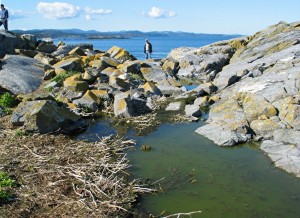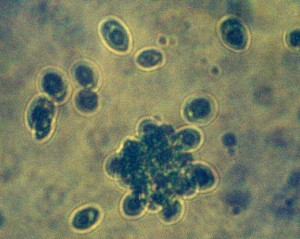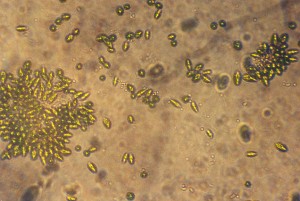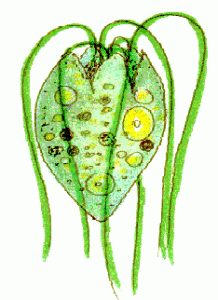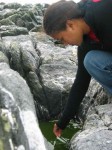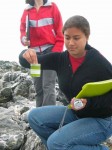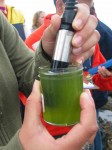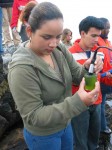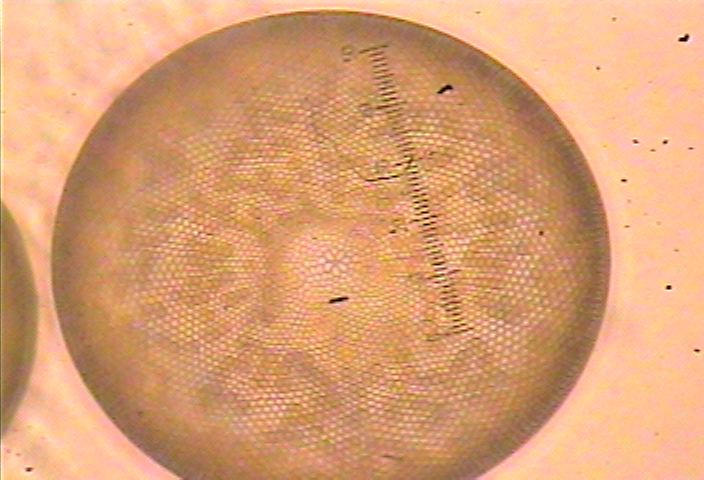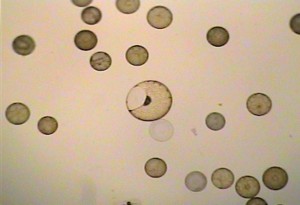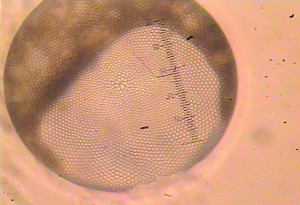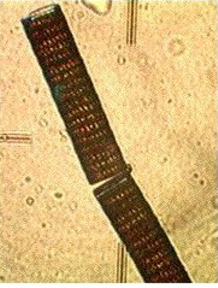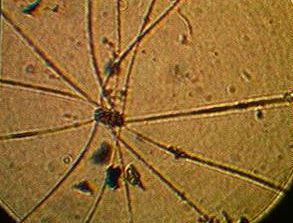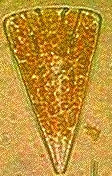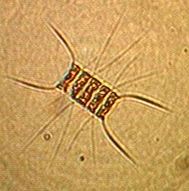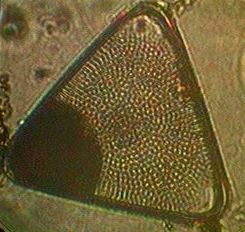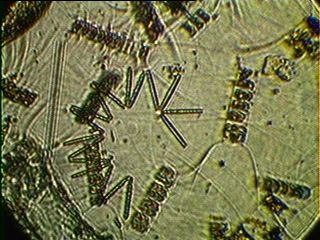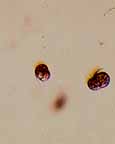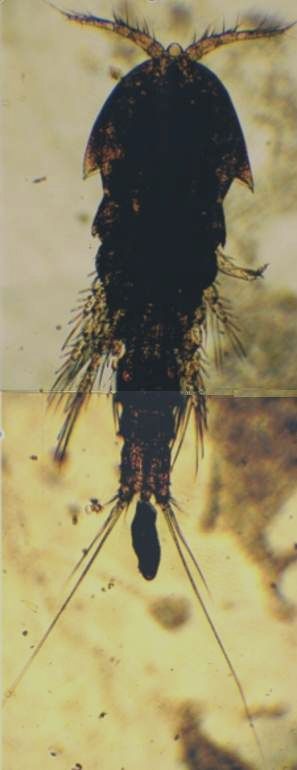 We frequently find abundant populations of Harpacticoids in the high tidepools number 10, 7 and 2 at Race Rocks
We frequently find abundant populations of Harpacticoids in the high tidepools number 10, 7 and 2 at Race Rocks
Populations can fluctuate widely through the seasons.. Since pool 7 is at the highest elevation, it may not receive new inputs of seawater unless there is a wind from the West. In the summer, with no rain, and with elevated temperatures, this shallow pool will develop salt crystals. At that time, the only population of Tigriopus californicus is in pool 2 which is deeper and shaded, and in pool 10 which is small but shaded. Later on, in October, pool 7 may have an abundant population concentrated along the vertical walls of the pool. In this photo, The photo above was taken on a compound microscope at 10 power, but it has been enlarged considerably by photomicrography
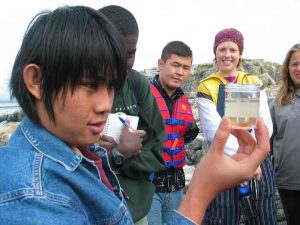 In this photo Gerald has scooped up a sample from pool 10,where they are visible to the naked eye as small moving reddish dots.
In this photo Gerald has scooped up a sample from pool 10,where they are visible to the naked eye as small moving reddish dots.
Research done on this organism by the student T.C. Merchant at the Hopkins Marine Station of Stanford University in 1977, refers to this unique osmoregulatory adaptation for this Euryhaline environment.
“Abstract: Tigriopus californicus exhibit a unique osmoregulatory behavior which is highly adaptive in the high splash pool habitat. They conform osmotically in intermediate salinities and regulate hypo and hyper osmotically in high and low salinities respectively. Gut fluid appears to remain isosmotic with the environment. Evidence is presented to suggest the gut may be a regulatory surface in Tigriopus. The range of osmoconformance depends on the length of acclimation to a given salinity. O2 consumption in Tigriopus is high in low salinities decreasing as salinity rises. Metabolism appears not to change significantly over the conforming range 35 to 60 0/00″
Other interesting research on this organism has been on its Phylogeny. Research done in southern latitudes on Tigriopus revealed one of the highest levels of mitochondrial DNA differentiation ever reported among conspecific populations. S.Edmands ( Molecular Ecology,Volume 10 Page 1743 – July 2001) showed that populations from Puget Sound northward had significantly reduced levels of within-population variation based on cytochrome oxidase I sequences. These patterns are hypothesized to result from the contraction and expansion of populations driven by recent ice ages.
The Pesticide Action Network North America.lists extensive results of toxicity studies with Pesticides using Tigriopus californicus.
Dr. Maarten Voordouw working with Dr.Brad Anholt of the University of Victoria has researched the evolution of Sex ratios in Tigriopus californicus. He found there to be a variation in offspring sex ratio larger than the binomial expectation, and that females produce male-biased clutches at higher temperatures. The trait is heritable and is transmitted primarily through the paternal line. http://web.uvic.ca/~banholt/anhlabsite/tigs.html
Other Members of the Phylum Arthropoda at Race Rocks.
 The Race Rocks taxonomy is a collaborative venture originally started with the Biology and Environmental Systems students of Lester Pearson College UWC. It now also has contributions added by Faculty, Staff, Volunteers and Observers on the remote control webcams. Oct.2005Astrid Raquel Argueta PC yr 31
The Race Rocks taxonomy is a collaborative venture originally started with the Biology and Environmental Systems students of Lester Pearson College UWC. It now also has contributions added by Faculty, Staff, Volunteers and Observers on the remote control webcams. Oct.2005Astrid Raquel Argueta PC yr 31
